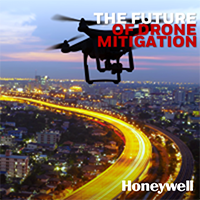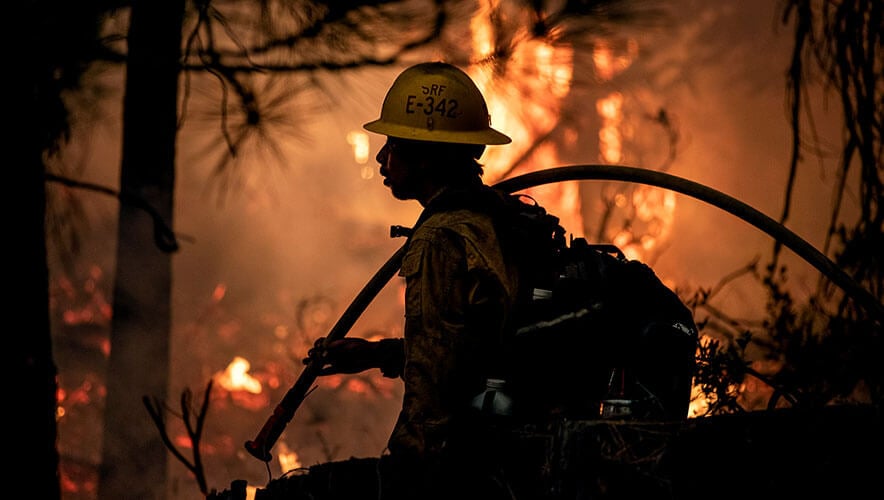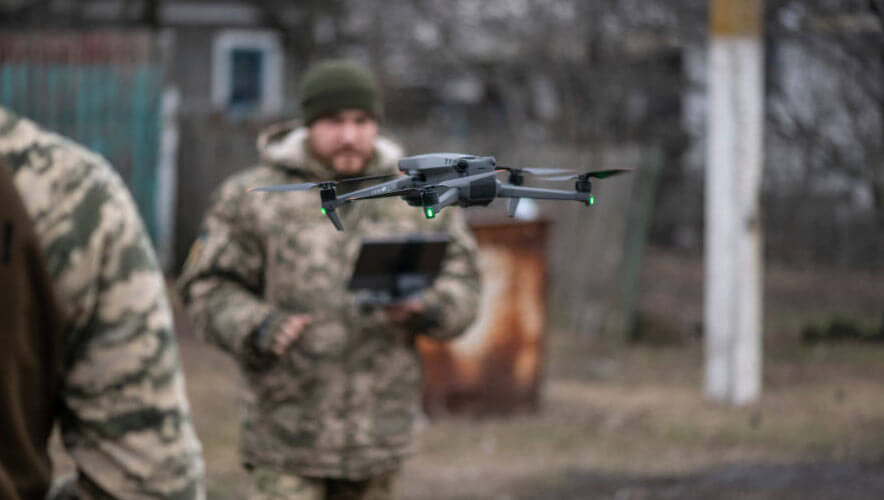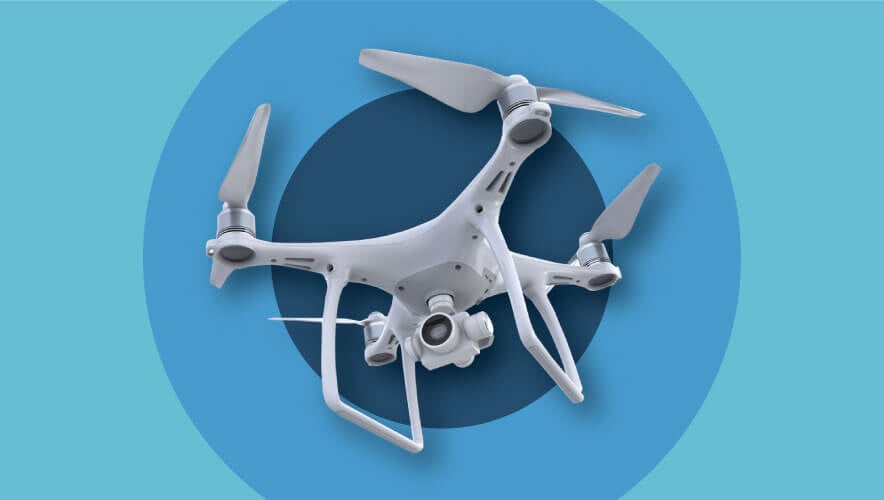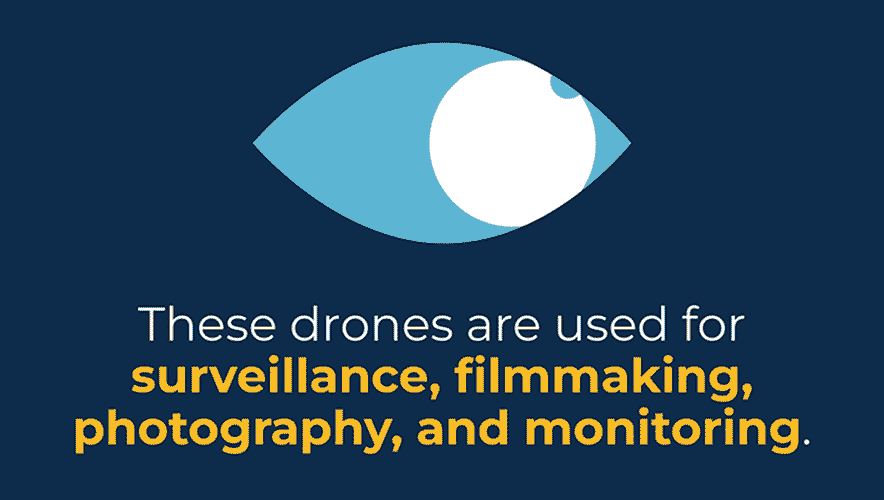The Security Implications of Drone Threats
Uncrewed aerial systems (UAS), commonly known as drones, are everywhere. In contemporary operating environments, they are being used for intelligence, surveillance, and reconnaissance (ISR) operations—or they can even serve as improvised explosive devices (IEDs).
They are being used to transport and deliver food and goods to consumers, and organs to transplant patients. Drones are also being used in search and rescue missions and leading Candy Crush advertisements in New York City—yes, this was a real thing.
While drones can be used for good, there are a variety of nefarious uses of the technology that threaten both physical and national security.
Overview of Drone Threats
When not used for authorized purposes, it is easy to assume that the rogue UAS flying around is being used by a hobbyist or a young child playing with their new toy. But that isn’t always the case, as people have found ways to use the technology for alternative—and sometimes malicious—purposes.
Prisons. With drones, it is easier than ever to smuggle drugs, cellular devices, liquor, and even weapons into correctional facilities. Someone outside of the prison can strap a couple of pounds of contraband to a UAS and land it within a designated area, such as the outdoor recreation facility. Or, in a potentially scarier scenario, use drones for surveillance to aid escape attempts. All of this poses a physical threat to other inmates, prison staff, and the local community.
The Office of the Inspector General for the U.S. Department of Justice issued a report in 2020 that found an increase from 23 reported drone incidents in 2018 to 57 reported incidents in 2019, a more than 50 percent increase in one year. The report also revealed that the U.S. Bureau of Prisons (BOP) did not have protocols or staff training to safely approach and secure downed drones. The BOP agreed with recommendations the inspector general made to improve drone detection and response, but it’s unclear if those suggestions were implemented.
International borders. Smugglers have used UAS to transport drugs from Mexico into the United States, bypassing border security measures. A county sheriff in the U.S. state of Texas testified before Congress about cartels piloting drones to illegally enter U.S airspace—1,937 instances in 31 days in 2023.
Airports. More than 2,000 drones were sighted near airports in the first six months of 2022; the U.S. Federal Aviation Administration (FAA) now receives more than 100 reports of drones near aircraft each month.
The most obvious threat of drones to airports is the potential for them to collide with aircraft and cause it to crash—or damage engines and other aircraft equipment. But what if the drone was used for a far more nefarious purpose—such as aiding a terrorist attack similar to 9/11? Drone surveillance capabilities could assist with plotting an attack, and the ability to attach firearms and IEDs to them is a threat that should be taken seriously.
There is also a financial impact due to the disruption to airports by drones. In December of 2018, more than 1,000 flights were disrupted in the 36-hour shutdown at London Gatwick Airport when a drone randomly flew through the airspace. The estimated financial impact exceeded $60 million. In July 2022, an unauthorized drone flew near Ronald Reagan Washington National Airport, halting flights for 45 minutes. The incident delayed more than 140 flights and caused 10 cancellations.
SponsoredHoneywell Drone MitigationCollecting real time data on drones in your airspace helps evaluate potential threats going forward so you can better protect your facility and critical assets. |
Cybersecurity and exploitation of data. Drones have the capability to elude security cameras and other physical security measures to hover close to an otherwise secure facility (think facilities that move, store, or transmit highly sensitive data). Drones carrying a micro-computer could closely approach these facilities to overtake computers and accessories connected via Bluetooth peripherals, steal data by posing as an evil twin mimicking a Wi-Fi network, or even capture passwords with a Wi-Fi keylogger. All of these actions can be enabled by proximity of a drone hovering close to these sensitive areas.
It is clear that there needs to be a way to disable drones and thwart these threats. Unfortunately, there are many policy limitations that leave officials unable to act.
Policy Limitations
When it comes to countering unauthorized UAS in domestic airspace, the waters in the United States are murky—especially for local officials.
The FAA is responsible for the safety of U.S. airspace. Local law enforcement, the U.S. Department of Homeland Security, and the U.S. military have the authority to take action to counter drones and create no-fly zones. For special events, such as National Special Security Events like the Super Bowl or political conventions, organizers can create temporary no-fly zones that limit when and where drones can fly.
But what if someone violates these no-fly zones? Enforcing airspace restrictions is still a major challenge where policy limitations become apparent.
For instance, there can be confusion about who is responsible for designating the take down of a drone. There is also uncertainty—and sometimes unavailability—of technology to counter drones. Interfering with the radio frequency of a UAS, such as signal jamming, is illegal in the United States.
Other methods to take down drones include directed energy—like microwaves or laser technology—that are not generally authorized for use by the FAA. This is because they could damage pilots’ eyesight or commercial aircraft flying in the area. To deploy these technologies, users would have to request FAA permission to engage a drone. If the FAA determines the user has a “clear path,” he or she may only have minutes—or seconds—to act. This is not an efficient method or straightforward process for thwarting these threats.
What is Needed?
I am in support of the creation of a policy advisory group that brings together businesses, federal labs, agencies, and universities to determine how policies can be administered by local or regional officials for countering UAS threats. There also needs to be a closer look at the technology that is being developed, whether for the U.S. Department of Defense or intelligence agencies. Most of these agencies are working with cutting-edge solution providers that are building new, emerging technology that is not yet available to local officials but might be able to solve their current problems. Collaboration here is key.
This dovetails into the need for more test ranges. Test ranges are caged environments that allow counter-drone technology providers to test the efficacy of their products before they are approved for public usage. These environments are typically free of both environmental and operational hazards. It’s imperative that this technology is tested before usage to decrease the risk of adverse effects, such as personal injury or damage to infrastructure. As more funding is funneled into developing these technologies, the demand for test ranges will exceed the supply.
Some test ranges include laser test ranges, which are required to have controlled land or maritime environments, as well as controlled airspace. These areas must be controlled, so as to not cause damage to eyes or overflying aircraft while testing the capabilities of directed energy systems (lasers and microwaves) against a flying UAS. Developing and funding such ranges that have minimal overhead flights or minimal boat traffic in a maritime environment are hard to find and are expensive to maintain and staff appropriately.
Additionally, getting time on a test range is extremely difficult. Test ranges have to be shared with all public and private institutions that need to use them—including the U.S. military. There is also a limited amount of time that can be spent on test ranges. Manufacturers are competing for not only the space but the time to conduct testing. The short-term fix is to ensure that products are not sent to test ranges prematurely. Ensuring that technologies have gone through the appropriate development and in-house testing processes is essential. It will help limit the need for continual time on test ranges. Speed to market is essential, yet the limitations with test ranges stalls the development of new products.
Lastly, more emphasis needs to be funneled into U.S. educational systems. Oklahoma State University and Virginia Tech are just two examples of many universities with stellar drone programs. Oklahoma State in particular was awarded a grant to launch a Counter-UAS Center of Excellence and has an unmanned systems research institute within its College of Engineering, Architecture, and Technology. Similarly, Virginia Tech has an Uncrewed Systems Laboratory that focuses on air vehicle research and testing. Both of these institutions’ programs help connect students to professionals within the defense and commercial markets, furthering opportunities for post-graduate employment and also allowing agencies and organizations within these sectors to further their own projects and counter-UAS missions.
Gregory Quarles, Ph.D., is CEO of Applied Energetics, a pioneer in laser-based directed energy solutions. Quarles has been a global leader in the development of laser technologies and engaging in global policies involving optics and photonics for the past three decades. Quarles has served on multiple corporate boards and is active in leadership positions with professional societies, such as Optica, SPIE, the Institute of Electrical and Electronics Engineers, and the Directed Energy Professional Society.

